We all have our favorite local birds. Perhaps you love the antics of chickadees at your feeder, or the sight of a bright-red cardinal amongst the trees. I’d like to introduce you to my favorite bird of North America, the eastern phoebe.
The eastern phoebe is a favorite among birdwatchers, and when you hear its call for the first time around mid-March, you know that spring is here!
The eastern phoebe belongs to the group of flycatchers, and is a small, brownish-gray bird with dark gray-brown upperparts and slightly darker wings and tail. Their underparts are pale with a hint of olive-brown or yellow on their sides and breast.
Since there are so many species of flycatchers, there are certain markers that make the eastern phoebe easy to identify. For one, when perched, they do a gentle tail-wag. Also, their soft “fee-bee” song, like they’re calling their own name, is very recognizable.
The good news is that due to their very high tolerance of human activities, they are a species of least concern, and their populations are doing very well.
It’s a great time to introduce you to this species, since you are most likely hearing their joyful songs in your backyard this time of year (depending on where you live).
Let us take a deeper look into their life history, as well as introduce some tips that you can use to increase their presence around your home.
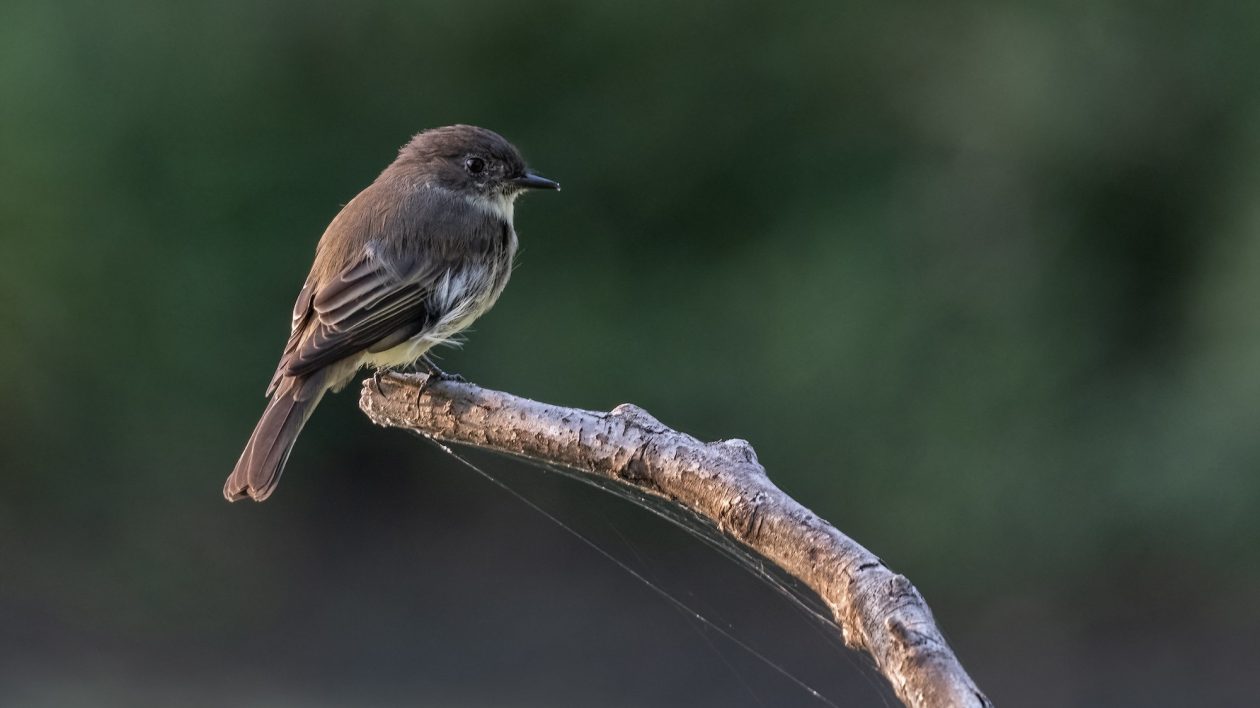
The First Banded Bird
In 1804, the eastern phoebe was the first bird to be banded. John James Audubon, American ornithologist, naturalist, and artist who was known for his studies and detailed depictions of North American birds, used a single piece of silver thread and attached it to a phoebe’s leg, to track and monitor its return in future years.
This research would lead to ornithologists using methods such as banding to monitor bird populations in the future.
Continuing to study the species, Audubon’s depictions of the eastern phoebe in his artwork were true to life. In one photo, Audubon illustrates both birds “with their crests raised in mating excitement, perching on the Sea Island cotton plant.”
As the male arrives to the breeding ground, he sings a courting song to his potential mate. If she approves, the female will raise her wings in acceptance.
According to the Cornell Lab’s site, All About Birds, the oldest Eastern phoebe was at least 10 years and 4 months old. It was banded in Iowa in 1979, and was later found in Alberta in 1989.
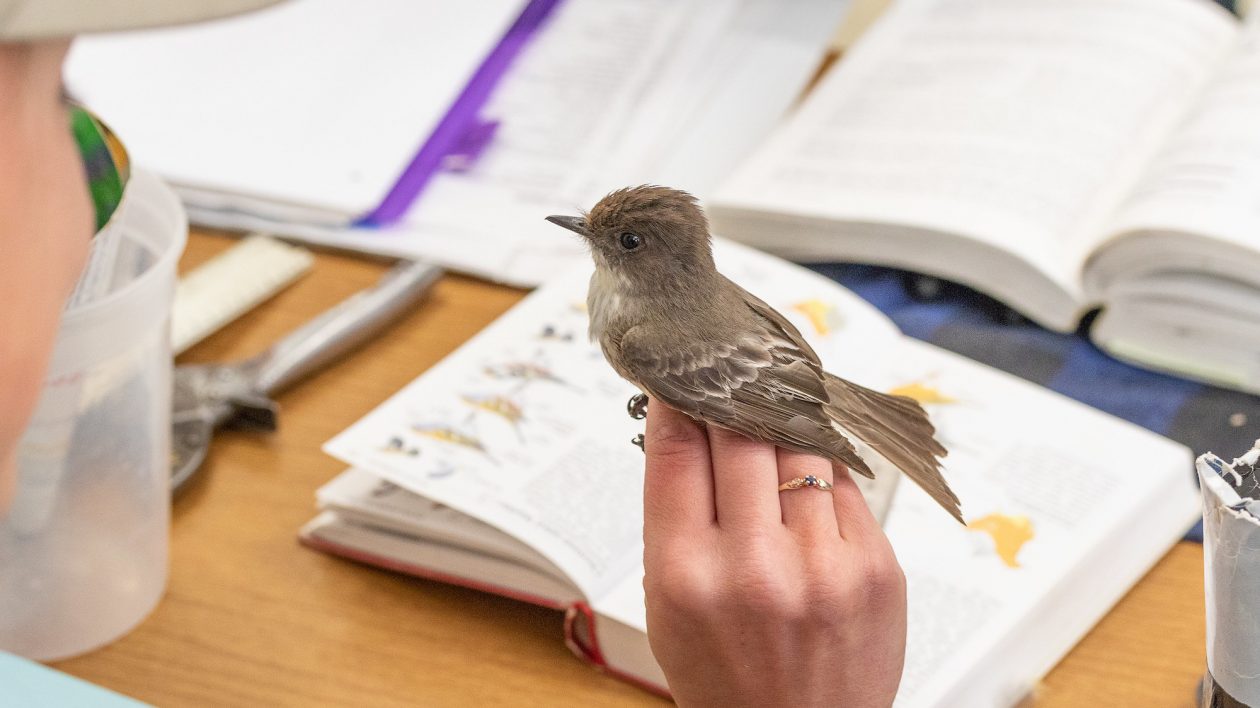
A Phoebe’s Life History Traits
The eastern phoebe breeds in eastern North America, and then migrates to wintering grounds stretching from the southeastern United States all the way to southern Mexico. Being one of the first migrants to return to the breeding grounds once spring arrives, eastern phoebes will stay for around six months or more.
Although they will build their nests in high branches and even holes in trees, one may commonly find their nests in places that have very firm support, such as barn cellars, sheds, and even under bridges.
In fact, according to the Cornell Lab of Ornithology, the uses of these structures allowed the eastern phoebe to tolerate the many landscape changes made by humans.
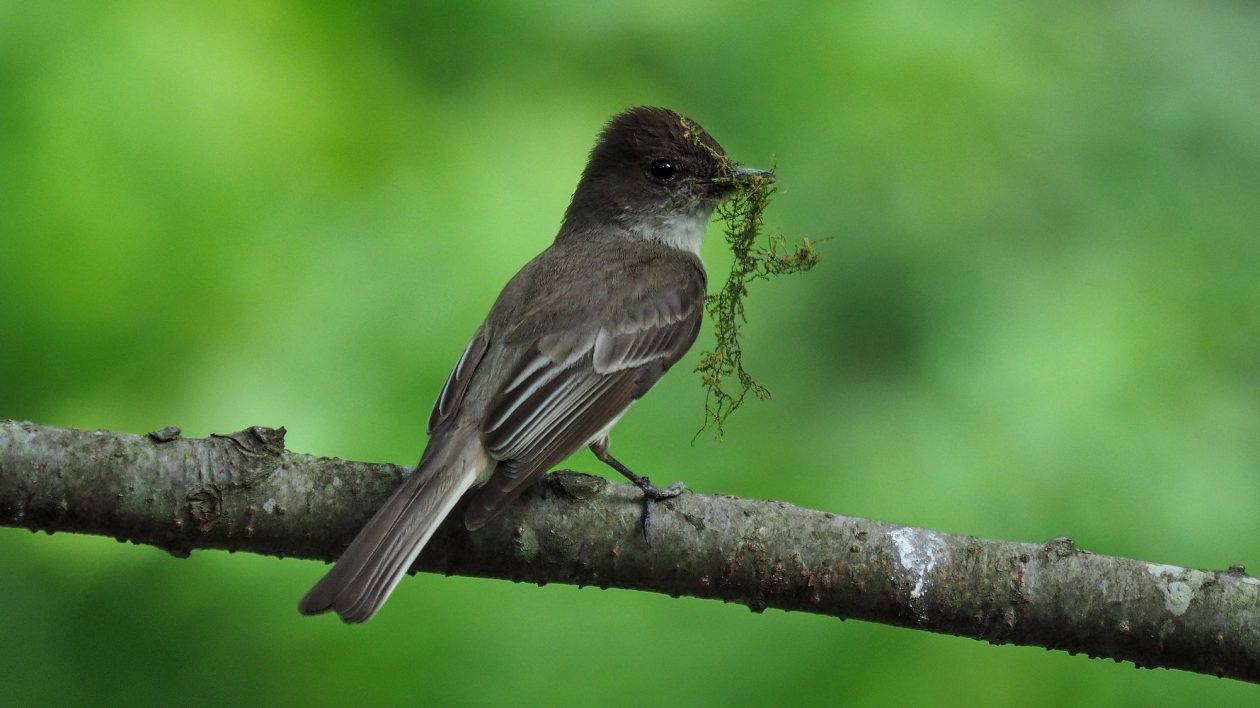
Their nests are usually made of green moss and mud, and they may re-use their nest a second time during the breeding season, or may even build a new nest. The eastern phoebe will lay anywhere from three to seven pure white eggs.
The eastern phoebe’s diet consists mostly of moths that they catch in mid-air (a common trait of flycatchers), as well as other insects like spiders, millipedes and grasshoppers. They also will occasionally eat small fruit.
Being able to adjust and co-exist with humans as well as other animals has led to a lack of shyness in phoebes. In 1922, researcher Clinton G. Abbott recalls the story of a female phoebe who had built her nest close to his family home, stating, “within a week, she had succeeded in completely readjusting herself to the new conditions. From her original shy and timid self, she was metamorphosed into quite a different type of bird, stolidly remaining seated upon her nest regardless of sudden noises or the movements of people.”
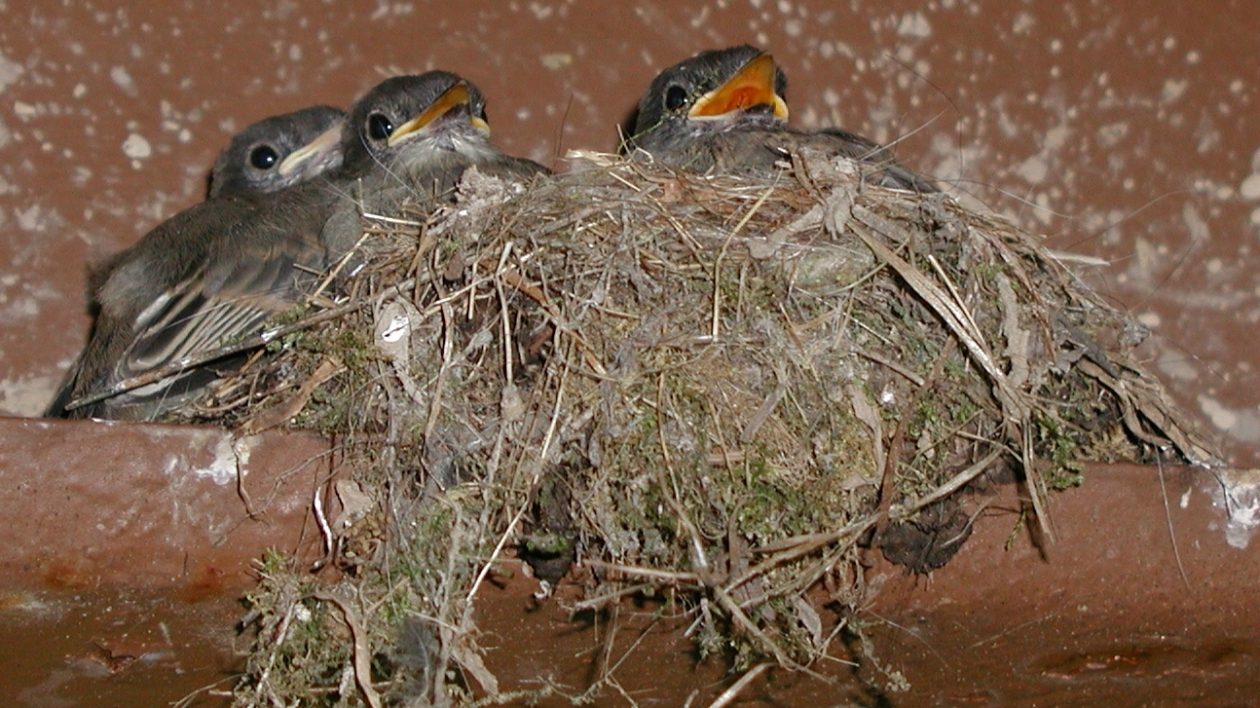
Other Cool Facts about the Eastern Phoebe
The adaptions that eastern phoebe’s have developed when it comes to their life-history traits is extraordinary, but here are a few more additional fun facts:
- Although the eastern phoebe is monogamous, meaning that they stay with the same mate for life, they are “loners”. They rarely come in contact with other phoebes, and even mated pairs do not spend much time together, except for occasional roosting in early pair formation.
- Although the Eastern phoebe is one of the first birds in its range to return to the breeding grounds in spring, it is also one of the last to leave in the fall. They will return to winter quarters around the same time when other migrant songbirds do, in September and early October. Additionally, their migration times have stayed the same in the last 100 years.
- The Brown-headed cowbird is one of the biggest threats to eastern phoebe nests. Known as brood parasites, cowbirds will replace the eggs in the eastern phoebe’s nest with their own.
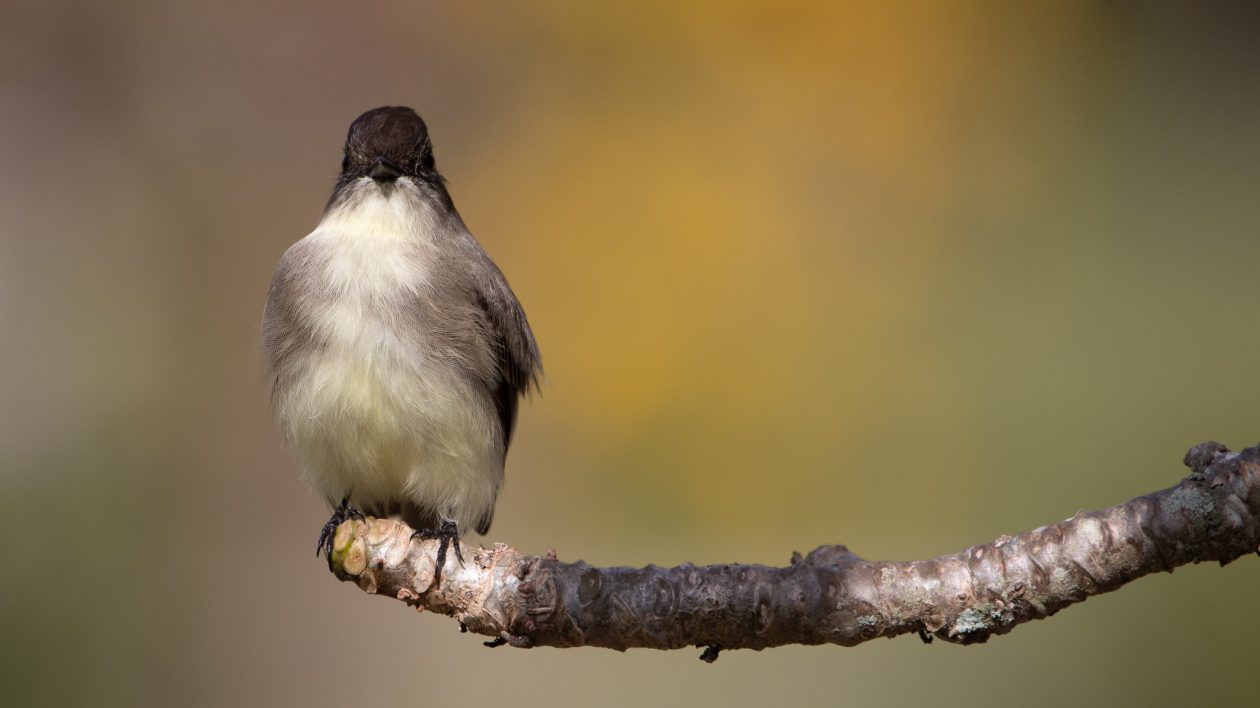
Backyard Tips to Attract Phoebes
Since the Eastern Phoebe is a species of flycatcher, and mostly eats insects, it will not visit backyard feeders filled with seeds. Helpful backyard tips include having a yard or garden to encourages insects, which will therefore encourage Eastern Phoebes.
They favor flowers and vines like the Virginia creeper and wild grape, and shrubs like the American elderberry. Adding a perch of some kind near the garden can also help, as phoebes like to fly from perch to perch in search of insects. Also, consider adding a birdbath.
As for providing a place for phoebes to nest, consider putting up a nest structure of some kind before the breeding season occurs.
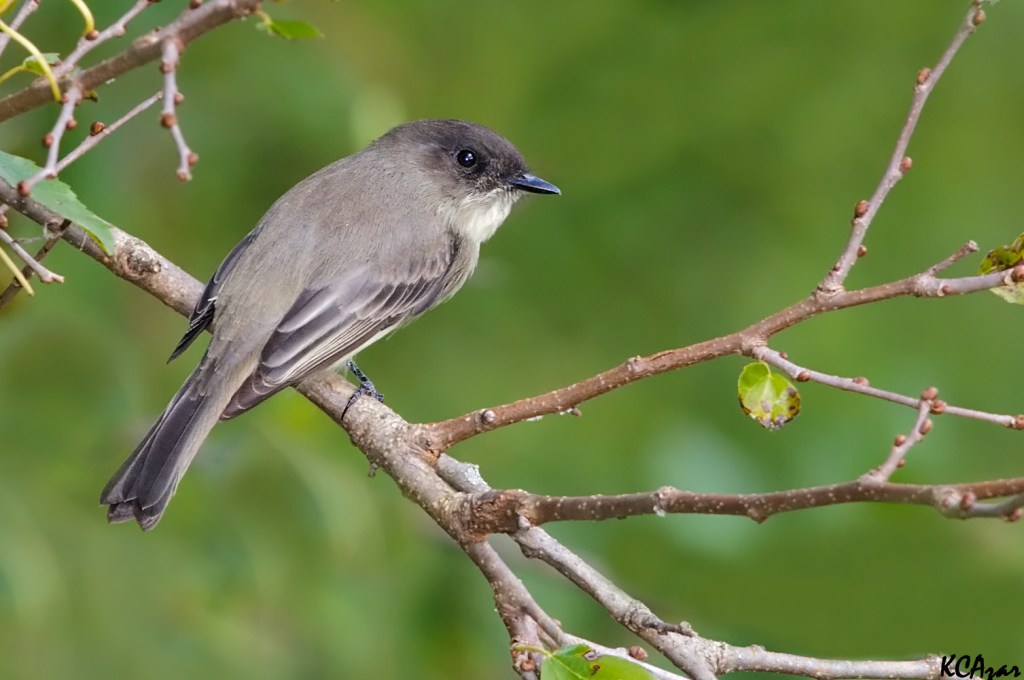



Our Holly Grove Volunteer Rescue Squad in Bumpass, VA has had nesting Eastern Phoebe’s for at least 15 years. And, always in the same location…tucked up in the corner of an overhang attached to the building.
She reuses her nest 2Xs a season. We can almost set a clock as to when she arrives and starts to build.
What a precious lil species!
Great article, always wondered what those little grey birds were. One note, the Exploring Birds link goes to a spam site, it seems that another party bought the domain after it expired. Thanks for keeping us informed on these birds!
Love to see our Phoebes return this year. In the past, we had a bromiliade (spelling?) hanging out back with long, thorny arms. I would get dried meal worms and stick them on the thorns, then watch the Phoebe fly out, snatching the mealworms from the thorns without landing. So much fun to watch! Now they will come and get the mealworms from out of our mealworm feeder we have for the bluebirds. If we didn’t have that, the robins would keep our insect eaters away ( they’re too big to get inside). The Phoebes are small enough to get part of their body in and grab what they want. Hope they continue to return each year. They are so velvety looking…just beautiful and interesting birds!
Love my Phoebes. I have watched a pair successfully hatch two nests a year on my back porch for the past few years. The siblings do seem to hang together for awhile coming off the nest. Watching tiny adolescents flit around is a great joy.
I’ve just this spring come to know the Pheobe. They have found my back porch as a very good spot to build their nests. They had one brood which I found fascinating however they were very territorial which clashed with my German Shepherd’s claim to the back porch. They also pooped a lot on my doorstep because the nest was above my back door. I enjoyed having them but I was relieved when the babies left the nest as I was happy to get my porch back for summer. I got rid of the nest thinking they were done with it, however they were back at it only days after. I discouraged them from rebuilding by putting up shiny things (old CDs) as the internet suggested, only to have them move their operations to above the window while I was at work. I have found that a good compromise. So needless to say we are a few days post egg laying. I did miss mom and pop phoebe and happy to still have them around now that they are not above my door. I will be installing the a/c in that window next week but they are quite set on staying so I don’t think it will deter them! I use a selfie stick to take good photos and vids of the entire process. 😍
Great article!
This was a great article as I was introduced to them this year. They built the most amazing nest on top of our ceiling fan of our porch/deck.
We have been watching them daily, and they have gotten quite use to us. I would love to use the ceiling fan again someday tho. I read in your article that they could use the nest again, arrrrggh! At least they are a fly catcher, and the bugs will be at a minimal. We have some great pictures. I just realized today that the security camera is above them, I could easily adjust to watch them close 🙂
The former owner of our house put up a nice high shelf in the corner of our porch where the phoebes nested. A few years ago the babies died and were tossed out of the nest. We suspected that the old nest, built up over the years, had become diseased so since then we have gotten up on a ladder in late winter and discarded the nest and cleaned the shelf with 10% bleach solution. When the phoebes return they rebuild the nest. We love having them.
My Phoebes have been coming back for almost 20 years, using the same nest over and over. They have not returned yet and it’s already the second week in April. I’m a little sad about it.
These guys nest on my house every spring, yes they defecate on my laundry on the line but I let ‘em.
This article is very ,very informative. It was passed on to me by a close friend and I will pass it to my great niece Phoebe. Also my grandmother was named Phoebe spurring my interest.